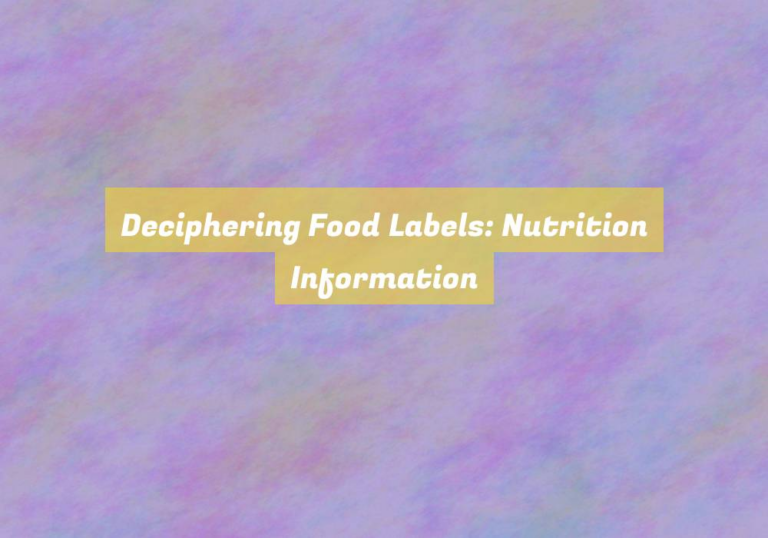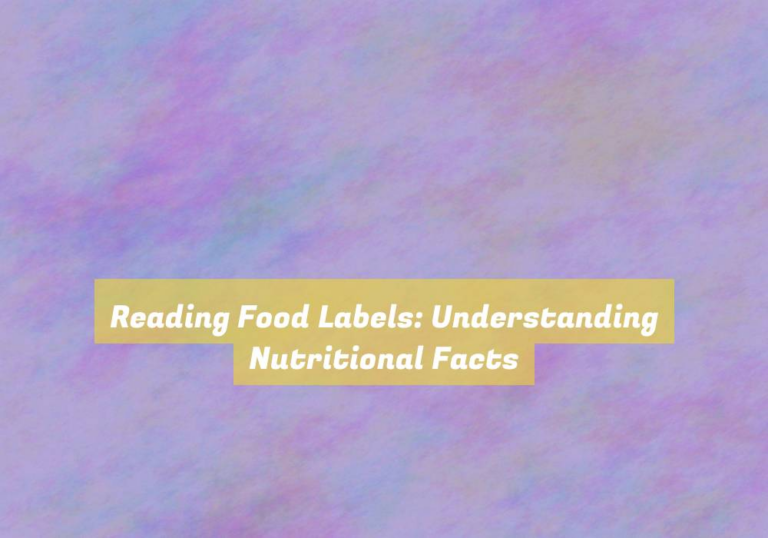Nutritional Facts on Food Labels: What to Look For
When it comes to navigating the nutritional landscape of the food you consume, there are certain key elements on food labels that you should pay attention to. Understanding what to look for can be a valuable tool in making informed choices about your diet.
By honing in on specific aspects of the nutritional facts, you can gain insight into the composition of the food you eat and its potential impact on your health.
So, what exactly should you be focusing on when perusing food labels? Stay tuned to discover the essential components of nutritional facts that can help you make more informed decisions about your food choices.
Understanding Serving Sizes
Understanding serving sizes is crucial for making informed decisions about your food intake. When you pick up a food product, the serving size listed on the label may not always match what you typically consume in one sitting. ItG??s important to pay attention to the serving size and the number of servings per container. This information directly impacts the accuracy of the nutritional content listed on the label.
Many people overlook the serving size and end up consuming more calories, fat, and other nutrients than they realize. For example, if a package of chips lists the serving size as 1 ounce and you eat 2 ounces, youG??re actually consuming double the calories and nutrients listed on the label.
To avoid this confusion, take a moment to measure out the serving size and compare it to your usual portion. This will help you gauge how the nutritional content aligns with your dietary needs. By understanding serving sizes, you can better manage your food intake and make healthier choices based on accurate nutritional information.
Evaluating Macronutrient Content
To accurately assess the macronutrient content of a food product, carefully examine the nutritional label for information on protein, carbohydrates, and fats.
Protein is essential for muscle growth and repair, so look for products with a good amount of protein per serving.
Carbohydrates provide energy, but itG??s important to differentiate between complex carbohydrates, which are healthier, and simple carbohydrates, which can lead to rapid blood sugar spikes.
Additionally, keep an eye on the fiber content, as this can impact digestion and overall health.
Fats are also crucial, but itG??s important to focus on the type of fats present. Look for products with unsaturated fats, like those found in nuts and avocados, while limiting saturated fats and avoiding trans fats altogether.
Remember, not all fats are created equal.
Identifying Added Sugars and Sodium
When reading food labels, focus on identifying added sugars and sodium content to make informed choices about your diet. Added sugars can hide under names like high fructose corn syrup, maltose, dextrose, and many others. Be wary of products that list these ingredients near the top of the list, as this indicates a high sugar content. Keep in mind that natural sugars, like those found in fruits and dairy, arenG??t considered added sugars. ItG??s essential to limit your intake of added sugars, as they contribute to weight gain and can increase the risk of developing health issues such as diabetes and heart disease.
In addition to added sugars, pay attention to the sodium content of the foods you consume. High sodium intake can lead to high blood pressure, heart disease, and stroke. Look for foods labeled as G??low sodiumG?? or G??no added salt,G?? and aim to choose products with lower sodium content. ItG??s also a good practice to compare similar products and choose the one with the lowest sodium content per serving.
Assessing Vitamin and Mineral Contributions
As you continue evaluating food labels, pay attention to the vitamin and mineral contributions, which are essential for maintaining your overall health and well-being. When assessing the vitamin content, look for essential nutrients such as vitamin C, vitamin D, and B vitamins like B12 and folate. These vitamins play crucial roles in supporting your immune system, bone health, and energy metabolism. Ensure that the food provides a good source of these vitamins to meet your daily needs.
In addition to vitamins, itG??s important to consider the mineral contributions in the food. Look for minerals such as calcium, iron, and potassium. Calcium is vital for bone health, iron is essential for oxygen transport in the body, and potassium helps maintain healthy blood pressure. Checking the mineral content can help you ensure that the food contributes to your daily intake requirements.
Conclusion
So next time you pick up a food item, remember to check the serving size.
Look for macronutrient content and identify added sugars and sodium.
DonG??t forget to assess the vitamin and mineral contributions.
By paying attention to these nutritional facts on food labels, you can make more informed choices about what you eat and ensure youG??re getting the essential nutrients your body needs.







